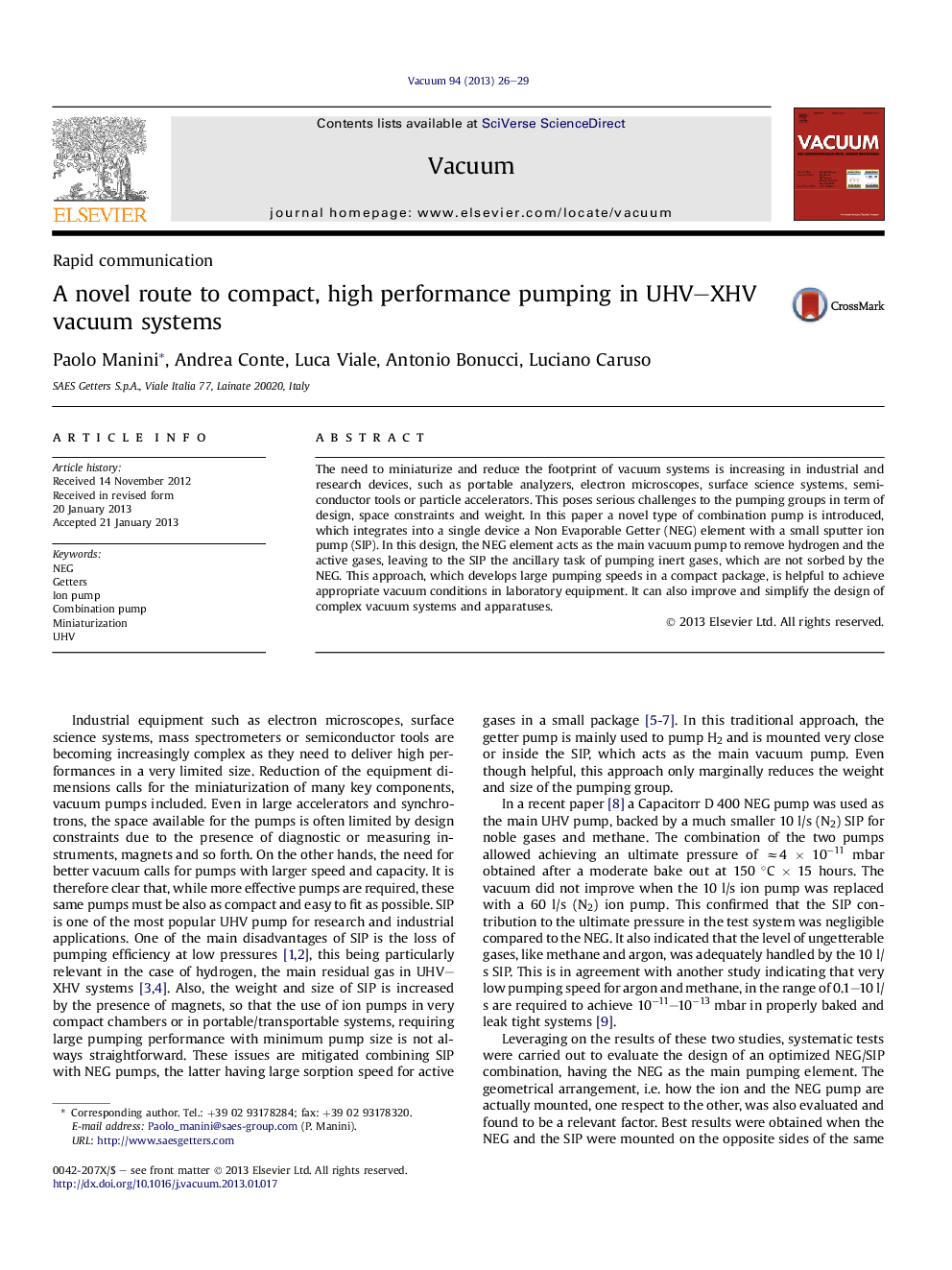| Article ID | Journal | Published Year | Pages | File Type |
|---|---|---|---|---|
| 1688576 | Vacuum | 2013 | 4 Pages |
The need to miniaturize and reduce the footprint of vacuum systems is increasing in industrial and research devices, such as portable analyzers, electron microscopes, surface science systems, semiconductor tools or particle accelerators. This poses serious challenges to the pumping groups in term of design, space constraints and weight. In this paper a novel type of combination pump is introduced, which integrates into a single device a Non Evaporable Getter (NEG) element with a small sputter ion pump (SIP). In this design, the NEG element acts as the main vacuum pump to remove hydrogen and the active gases, leaving to the SIP the ancillary task of pumping inert gases, which are not sorbed by the NEG. This approach, which develops large pumping speeds in a compact package, is helpful to achieve appropriate vacuum conditions in laboratory equipment. It can also improve and simplify the design of complex vacuum systems and apparatuses.
► In a new pump design the NEG is the main UHV pump, with a small SIP for CH4 and Ar. ► This new design delivers large speed (100–500 l/s H2) in a small package (<3 kg). ► SIP back flow of the new pump is reduced as degassed species are trapped by the NEG. ► The new pump achieved comparable or better vacuum than a 20 times heavier diode SIP.
